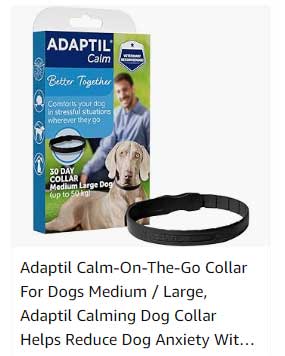As dog owners, we are often faced with various behavioral issues in our furry companions.
One of the significant challenges many pet parents encounter is anxiety, which can manifest in numerous ways.
While most people associate anxiety with behavioral changes, such as excessive barking, aggression, or destructive behavior, there is another less discussed side effect that can occur: itching.
In this article, we will explore the connection between dog anxiety and itching and what you can do to help your anxious pup.
The Link Between Anxiety and Itching
Anxiety in dogs can stem from multiple sources, including environmental changes, separation anxiety, past traumas, or even lack of socialization.
When a dog is anxious, their body goes into a state of hyperarousal, leading to various physiological responses.
One of these responses can include scratching or biting at their skin.
This behavior is often a result of the dog’s attempt to cope with stress, much like how humans might fidget or bite their nails under pressure.
Itching itself can be caused by various factors, including allergies, parasites, infections, or skin conditions.
However, when a dog’s skin appears healthy and yet they are still scratching persistently, it may indicate an underlying issue related to anxiety.
The stress response triggers the release of hormones such as cortisol, which can lead to inflammation in the body and result in itching or skin irritation.
Signs of Dog Anxiety
It’s essential for dog owners to recognize the signs of anxiety. Common symptoms include:
- Excessive barking or whining
- Destructive behavior (chewing furniture or digging)
- Pacing or restlessness
- Withdrawal or hesitation in social situations
- Changes in appetite
- Compulsive behaviors, such as licking or scratching
If you notice your dog exhibiting any of these signs, it might be worthwhile to consider if their anxiety could be contributing to their itching.
Why Does It Continue?
When an anxious dog itches, they may create a cycle of discomfort.
Scratching can lead to skin irritation, which can further exacerbate their anxiety.
This cycle can lead to a condition called psychogenic dermatitis, where the dog’s anxiety manifests in the form of skin issues.
Consequently, if your dog is scratching due to anxiety, they may develop sores or infections that require veterinary attention.
What Can Be Done?
If you suspect that your dog’s itching is related to anxiety, there are several steps you can take to help your furry friend:
1. Consult Your Veterinarian:
First and foremost, it’s essential to rule out any physical causes of the itching.
Your vet can perform tests to determine if allergies, parasites, or skin infections are the culprits.
If there’s no physical cause found, you can discuss further behavioral assessments.
2. Behavior Modification Techniques:
Addressing anxiety often requires behavioral modification strategies.
Consider enrolling your dog in training classes that focus on socialization and desensitization.
Creating a structured environment can also help reduce anxiety.
3. Calming Products:
Explore calming products designed for anxious dogs.
Items like anxiety wraps, pheromone diffusers, or calming supplements can aid in reducing anxiety levels.
4. Regular Exercise:
Regular physical activity is crucial for a dog’s mental health.
Taking your dog for walks or playing fetch can help reduce stress and provide an outlet for excess energy.
5. Create a Safe Space:
Designate a safe, quiet space in your home where your dog can retreat when feeling overwhelmed.
This area should be comfortable and filled with their favorite toys or blankets.
6. Routine:
Dogs thrive on routine. Keeping a consistent schedule for feeding, walks, and playtime can reduce anxiety by providing structure.
Final Thoughts
Itching in dogs can often be a complicated issue to navigate, especially when intertwined with anxiety.
By understanding the connection between the two, you can take proactive measures to help your dog feel more secure and comfortable in their environment.
Always remember that patience and compassion go a long way in addressing behavioral issues.
With the right approach, you can help your furry friend find relief and restore their sense of calm.










